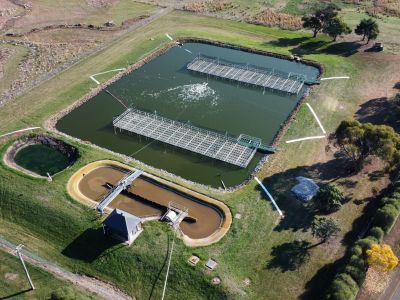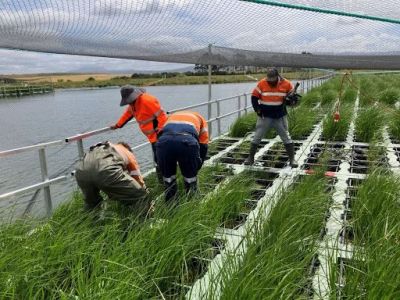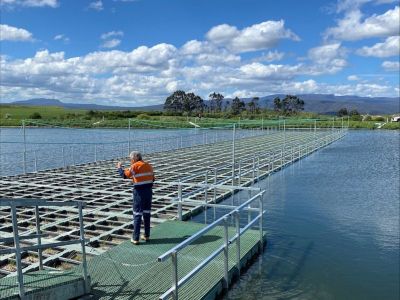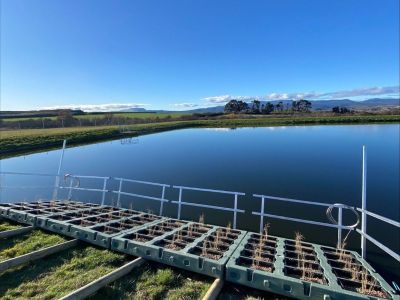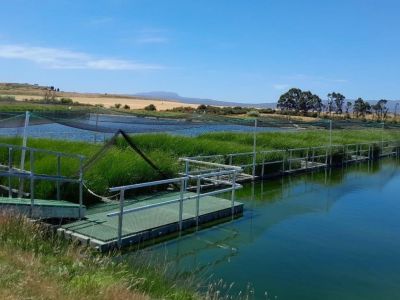Overview
Natural Processes in Wastewater Treatment
We operate 110 sewage treatment plants (STPs), of which over 58 are lagoons. Many of these plants are over 50 years old. Our lagoon plants are located across the state and mostly service regional towns.
Floating wetlands is one of our most innovative projects to date. We have been piloting constructed floating wetlands for over two years across three sites: Ross, Fingal, and Western Junction STPs.
About
Constructed floating wetlands are rafts planted with wetland plants. The wetlands facilitate natural biological processes to remove pollutants from water. The roots extend into the water, providing a surface for bacteria to grow and biofilms to form. The plants facilitate nutrient removal by transforming and directly absorbing nutrients through microbes and plants, assimilating them into organic and inorganic sediments, and converting them into nitrogen gas.
These wetlands offer a low-energy, passive, nature-based solution to reduce nutrients released into the environment. Floating wetlands use biomimicry by emulating the natural processes of freshwater ecosystems and mimicking a closed-loop wetland system. Biomimicry fits into a circular economy through the regeneration of nature.
Benefits
-
-
Increased biodiversity
-
Bioremediation opportunities
-
Reduced algae growth
-
Provide food source for aquatic biota
-
Enhanced visual amenity of water bodies
-
Easily retrofitted to existing treatment plants
Map
Gallery
Aerial view of the floating wetlands at Ross
Teams working on the floating wetlands platform in high vis
Floating wetlands inspection
Floating wetlands platforms before being floated
Floating wetlands at Ross with lots of growth

